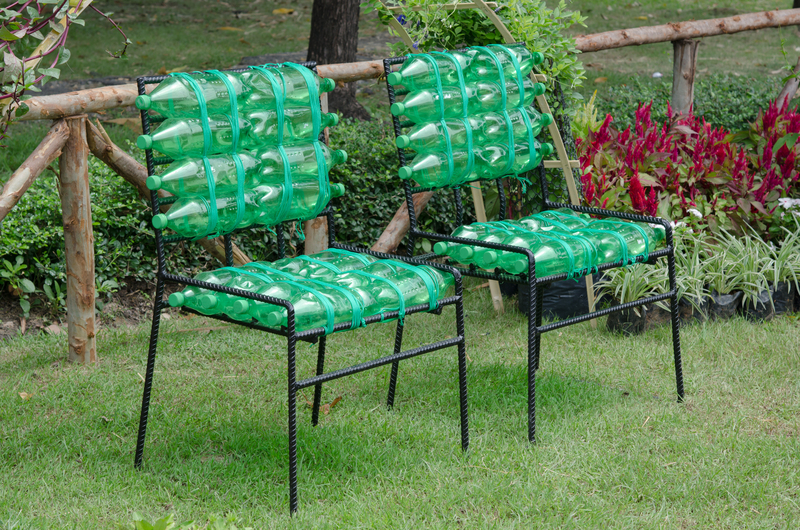Reducing Your Impact with Responsible PPE Waste Disposal
In a world increasingly driven by health and safety concerns, Personal Protective Equipment (PPE) has taken center stage. From face masks and gloves to gowns and face shields, PPE is now a crucial part of our daily routines in healthcare settings, workplaces, and even in personal environments. However, with the mass adoption of protective gear comes a new environmental challenge: responsible PPE waste disposal.
This article offers a comprehensive guide on reducing your environmental footprint through smarter, responsible PPE waste management. We'll explore why proper disposal matters, best practices for handling PPE waste, the lifecycle of disposable PPE, sustainable alternatives, and actionable steps everyone can take to mitigate the environmental consequences of our new reliance on these protective products.

Why is Responsible PPE Waste Disposal Important?
The global pandemic led to a surge in the use of disposable PPE, which has had a profound impact on waste management systems and the environment. Understanding the consequences of improper PPE disposal is the first step in tackling the issue.
- Environmental Impact: Most PPE is made from plastics or synthetic fibers that do not readily decompose. When improperly discarded, these materials can persist in the environment for hundreds of years, polluting landfills, waterways, and marine ecosystems.
- Public Health Risks: Discarded PPE can carry pathogens, increasing the risk of disease transmission to waste collectors, wildlife, and the general public.
- Waste Management Challenges: The sudden influx of single-use PPE has overwhelmed traditional waste handling systems, leading to increased costs and logistical challenges for municipalities.
Adopting responsible PPE waste disposal practices reduces these risks and helps create a cleaner, healthier world.
Common Types of PPE and Disposal Issues
It's vital to understand that not all PPE is created equal. The disposal requirements can vary based on material, use-case, and contamination risk.
- Face Masks: Typically made from layers of polypropylene or polyester. When tossed improperly, they can entangle wildlife and break down into microplastics in waterways.
- Gloves (Nitrile, Latex, Vinyl): Resistant to biological breakdown and often contaminated with hazardous substances.
- Protective Gowns & Aprons: Often laminated with plastic and may contain infectious material after use.
- Face Shields & Goggles: Made from hard plastics, these can be recycled in some facilities, but usually end up in landfills.
How to Dispose of PPE Responsibly: Step-by-Step Guide
Adopting responsible PPE disposal methods isn't complicated, but it requires awareness and commitment. Follow these steps to minimize environmental and public health impacts:
-
1. Segregate PPE Waste:
Never dispose of used PPE with regular recyclables or compostables. Always separate PPE waste to prevent contamination and facilitate safe handling for waste workers. -
2. Use Dedicated Bins:
Use bins clearly labeled for PPE waste only (ideally with foot pedals to avoid contact) and keep them in accessible locations. -
3. Double-Bagging:
In high-risk environments (e.g., healthcare), double-bag PPE waste and tie securely to lower the risk of exposure. -
4. Don't Litter:
Avoid discarding masks or gloves outdoors, on streets, or in waterways. Littered PPE doesn't just pollute--it can endanger wild animals and people handling community waste. -
5. Dispose According to Guidelines:
Check your municipality's or workplace's PPE disposal guidelines. Some areas offer specialized collection services or require you to drop PPE waste at designated facilities. -
6. Wash Hands:
Thoroughly wash your hands after disposing of used PPE to prevent the spread of germs.
Responsible PPE Waste Management in the Workplace
Organizations have a legal and ethical duty to manage PPE waste responsibly. Here's how businesses and facilities can minimize their environmental impact:
- Provide Clear Instructions: Train employees and visitors on PPE disposal protocols with easy-to-understand signage and visual aids.
- Install Dedicated PPE Waste Stations: Place specialized bins for PPE at building entrances, washrooms, and high-traffic zones.
- Regular Collection and Disposal: Schedule frequent collection of PPE waste to avoid overflows and possible contamination risks.
- Partner with Certified Waste Handlers: Work with licensed hazardous and medical waste disposal companies to ensure proper processing, especially for potentially infectious materials.
Responsible PPE waste disposal in the workplace not only protects employees but also demonstrates a commitment to sustainability and public health.
How Households Can Practice Responsible PPE Disposal
While businesses may have structured systems in place, individuals also play a crucial role. Here are simple steps for responsible PPE waste disposal at home:
- Bag used PPE securely in a separate waste bag. Do not place it with recyclables or garden waste.
- Double-bag if any household member is ill or self-isolating.
- Place the sealed bag with your regular trash, ensuring it goes to landfill and isn't scattered as litter or recycling contamination.
- Encourage family members and children to follow safe PPE disposal habits.
The Environmental Costs of Improper PPE Waste Disposal
*Improper disposal of PPE can have significant ecological impacts:*
- Microplastic Pollution: As PPE breaks down, especially masks and gloves, it creates microplastics that can enter water bodies and the food chain, threatening aquatic and human life.
- Threat to Wildlife: Animals may ingest or become entangled in discarded PPE, causing injury, starvation, or death.
- Landfill Overflow: Billions of disposable PPE items add to landfill pressures, taking up space and, in some cases, leaching toxins into the soil and groundwater.
- Burning Hazards: Incinerating PPE at improper facilities can release harmful chemicals like dioxins into the air.
Thus, responsible PPE waste disposal is not just an individual responsibility but a global necessity.
Sustainable Alternatives: Rethinking PPE for Environmental Harmony
To further reduce your impact, consider these sustainable PPE strategies:
1. Reusable PPE Options
- Washable Cloth Masks: Use high-quality, multi-layered cloth masks instead of single-use disposables whenever safe and appropriate. They can be washed and reused, drastically reducing waste.
- Reusable Face Shields and Goggles: Disinfect between uses. Purchase from reputable brands that support recycling or take-back programs.
2. Biodegradable PPE
- Compostable Masks and Gloves: Some companies now offer PPE made from plant-based or biodegradable materials. While still emerging, these can help ease landfill and microplastic issues.
3. Recycling PPE Waste
- PPE Recycling Programs: Specialized programs, such as TerraCycle's disposable mask recycling, can turn used PPE into new products. Check if your community or workplace participates in one.
Practical Tips for Reducing Your Impact with Responsible PPE Waste Disposal
Everyone can contribute to more responsible PPE management with minimal effort:
- Only Use What You Need: Don't hoard or waste PPE. Use reusable alternatives where practical and leave single-use items for high-risk settings.
- Educate Others: Share information on proper PPE disposal with friends, family, and colleagues to magnify your impact.
- Seek Out Green PPE: Support brands offering sustainable or recycled-content PPE products.
- Support Community Initiatives: Participate in local PPE clean-up days or recycling drives and encourage leadership to prioritize waste reduction.
- Stay Informed: Guidelines for PPE waste disposal change as new technology and regulations emerge. Stay updated by following your local environmental agency or recycling center.
The Role of Policy and Regulation in PPE Waste Management
*Governments and organizations have a key role to play in facilitating responsible PPE waste management:*
- Clear Legislation: Establish and enforce PPE-specific waste disposal policies to protect public health and the environment.
- Funding for Recycling Innovation: Invest in facilities and technologies that can safely recycle or neutralize PPE waste.
- Public Education Campaigns: Raise awareness about the importance of responsible PPE disposal through educational materials, advertisements, and community outreach.
By supporting strong regulatory frameworks and innovation, governments can scale positive change beyond individual action.
Common Myths About PPE Waste Disposal
- Myth: All PPE Is Dangerous Waste
Most household and non-healthcare PPE waste isn't classified as hazardous and can go to landfill, provided it is well-sealed. Only PPE contaminated with infectious material needs specialized treatment. - Myth: Disposable PPE Can Be Recycled in Curbside Bins
Standard recycling centers are not equipped to process thin plastics or potentially contaminated items--putting PPE in the wrong bin risks contaminating the recycling stream. - Myth: Leaving PPE Outdoors Isn't Harmful
Discarded masks and gloves can persist for years, harm wildlife, and create unsightly litter in communities.

The Future of PPE Waste Reduction
The problem of PPE waste won't disappear overnight. Tackling it requires a blend of responsible individual action, innovative product design, and robust waste management systems. Looking ahead, we can expect:
- Wider availability of biodegradable and reusable PPE
- Improved waste sorting and recycling infrastructure
- Greater emphasis on circular economy approaches, where PPE is designed with end-of-life recycling in mind
- More public-private partnerships supporting PPE waste minimization and recycling programs
Conclusion: Every Action Counts in Responsible PPE Waste Disposal
Our reliance on personal protective equipment is a necessity--but so is reducing your impact with responsible PPE waste disposal. By being mindful of how we use, separate, and dispose of these materials, each of us can help turn the tide on PPE pollution. Together, through informed action and environmental responsibility, we can keep ourselves safe while protecting the planet we share.
Let's take the next step--commit to proper PPE waste management today and inspire others to do the same.
